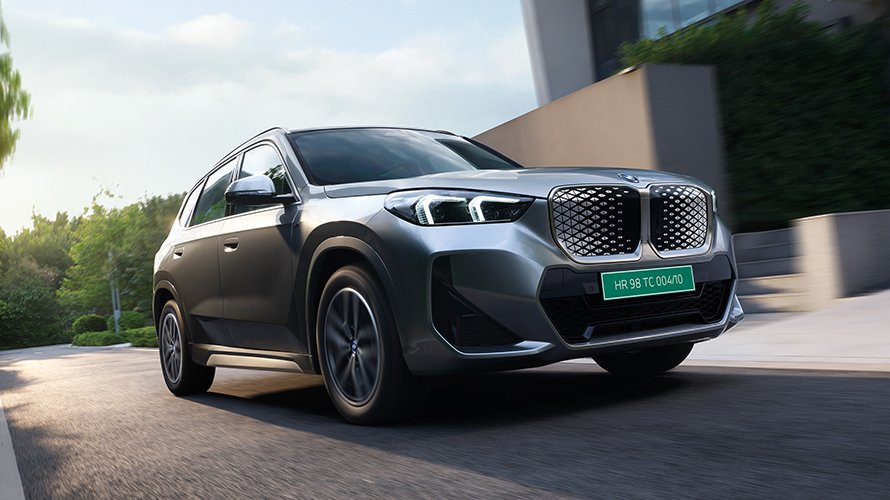Amid a flurry of electrifying debuts at the 2025 Gaikindo Indonesia International Auto Show (GIIAS), one compact powerhouse turned heads and sparked conversations: the BYD Atto 1. Priced at under Rp 200 million (roughly $12,000 USD or 10 lakh INR), this entry-level electric hatchback from Chinese EV giant BYD has Indonesians buzzing about its unbeatable value—a sub-4-meter urban warrior promising nearly 300 km of range without breaking the bank. As whispers of an Indian market entry grow louder, could this “Seagull” in disguise (its moniker in other regions) be the affordable EV spark India needs? Let’s dive into what makes the Atto 1 a potential game-changer.Launched on July 23 at GIIAS in Tangerang, the Atto 1 embodies BYD’s aggressive push into Southeast Asia’s booming EV scene, where subsidies and green incentives are fueling adoption.
At this jaw-dropping price, it’s not just a car—it’s a statement on accessible electrification, blending playful “Ocean Aesthetic” design with practical tech. For Indian buyers eyeing alternatives to the likes of Tata Punch EV or MG Comet, the Atto 1’s Tata Punch/Hyundai Exter-sized footprint (under 3.8 meters long, 2,500 mm wheelbase) and 155 mm ground clearance scream urban versatility.
True to BYD’s nautical naming convention—think Seal or Sealion 7—the Atto 1 channels a seaside vibe with its fluid lines and sporty flair.
Up front, signature double-slash LED headlamps flanked by sleek daytime running lights (DRLs) give it a predatory gaze, while the side profile boasts diagonal character lines sweeping across the doors, chunky C-pillars for a planted stance, and flush door handles for that modern aero touch. Rolling on 16-inch alloys, it exudes compactness without compromise.
At the rear, a full-width LED light bar ties it together, crowned by an integrated roof spoiler that adds a dash of athleticism to its SUV-lite silhouette. Despite its diminutive dimensions, the Atto 1 feels purposeful—like a mini-crossover ready for city skirmishes or weekend getaways. No wonder it’s creating a “furor” at the show; at this price, it’s the EV equivalent of a budget blockbuster.
Step inside, and the five-seater cabin punches above its weight. Front seats are generously bolstered and angled for support, cradling occupants without dedicated headrests— a minor quibble offset by plush cushioning that keeps you planted during spirited drives. Rear space is surprisingly accommodating for its class, making it family-friendly for school runs or grocery hauls.
The dashboard strikes a balance: simple yet elegant, with a triple-layered layout that adds depth without clutter. Circular toggle switches for controls evoke the larger Atto 3 SUV, offering tactile feedback in an increasingly touch-heavy world. A compact steering wheel with physical buttons feels intuitive and grippy, paired with a petite instrument cluster behind it—better than a bare-bones heads-up display for keeping drivers dialed in.
The 10.1-inch touchscreen is on the smaller side, but it handles infotainment basics smoothly, including Apple CarPlay and Android Auto. Plastics lean hard and textured—fine for an entry-level ride, though the grey tones and occasional plasticky sheen might not wow premium seekers. Practicality shines through: dual USB-A/Type-C ports, a wireless charging pad, twin cup holders, a sizable armrest (sans openable lid), push-button start, crisp AC vents, and a cavernous glovebox. It’s unpretentious, but for daily drudgery, it ticks every box.
Underpinning the Atto 1 is BYD’s third-generation e-Platform 3.0, featuring the acclaimed Blade Battery—lithium iron phosphate (LFP) cells integrated into the chassis for enhanced rigidity and safety.
In Indonesia, it launches with two battery options: a 30.08 kWh pack delivering a claimed 300 km range (NEDC cycle) and a larger 38.88 kWh unit stretching to 380 km—plenty for urban commuters.
A front-mounted electric motor churns out around 55 kW (74 hp) and 135 Nm, with a zippy 0-100 km/h in under 12 seconds. Charging is straightforward: up to 30 kW DC for the base battery (30% to 80% in ~30 minutes) or 40 kW for the bigger one, backed by a 6.6 kW onboard AC charger for home top-ups in 4.5 to 6 hours. Low running costs—pennies per kilometer—seal the deal for budget-conscious buyers.
Safety isn’t skimped: BYD’s DiLink system includes ADAS basics like adaptive cruise and lane-keeping, plus the Blade Battery’s puncture-proof ethos. At Rp 195 million (~10 lakh INR), it’s a steal compared to pricier rivals, explaining the Indonesian love affair.
What captivates Indonesians—decent range, roomy cabin, and whisper-quiet efficiency—could resonate just as strongly in India, where EV penetration hovers at single digits and affordable options are scarce. With BYD already scouting local assembly via its Tamil Nadu plant, the Atto 1 (or a rebadged Seagull) might dodge import duties and land under 11 lakh ex-showroom. It’d slot neatly against the Punch EV, offering superior range and BYD’s battery tech edge.



